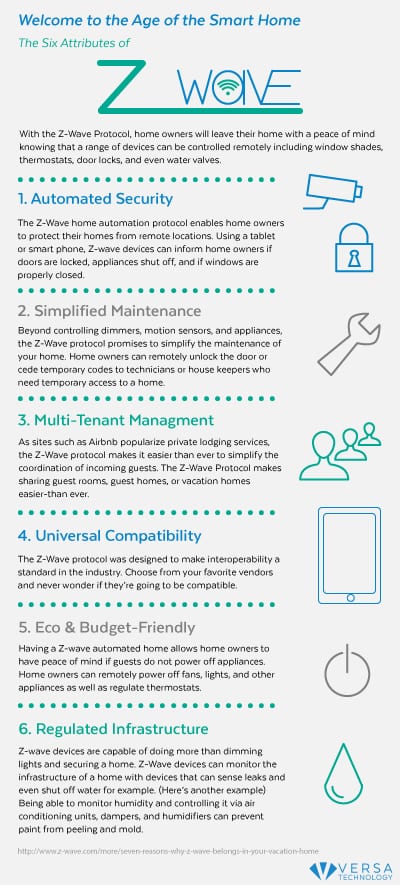If the elusive smart home triggers visions of mood lights set to Bach’s Cello Suite No. 5 upon arriving home from work, a new protocol in the home automation industry promises to make those dreams come true. The Z-Wave protocol will finally allow mainstream consumers to enjoy smart homes.
 Avoiding the 2.4 GHZ Band
Avoiding the 2.4 GHZ Band
The Z-Wave protocol operates in the 900 MHZ Radio Frequency Band (RF) allowing users to remotely control lighting, garage doors, surveillance cameras, thermostats, and other related motion sensors. The Z-Wave protocol avoids the more crowded 2.4 GHZ band used by the 802.11n Wi-Fi Standard.
Since very few devices currently operate in the 900 RF Band, the Z-Wave Alliance asserts that devices will experience less interference in this lower RF band. The 900 MHZ RF band utilizes a radio band that is comprised of longer wavelengths making it easier for signals to penetrate common home barriers such as walls and ceilings.
Achieving a Uniform Language
The Z-Wave protocol resolves compatibility issues and allows home owners to build a home automation system comprised of several vendors. Devices that support Z-wave protocol are able to seamlessly communicate with each other—without the need of professional installers.
The Z-Wave protocol will be built upon a mesh network topology. The more devices added to a mesh network, the more nodes devices have to communicate with each other. The Z-Wave protocol benefits from the self-healing and self-discovery nature of mesh networks.
Accessorizing Household Items With IoT
Converting a “dumb home” into a smart home will not require replacing common household items with more intelligent ones. Transitioning into a smart-home can be as simple pairing existing devices with smart power accessories.For example, making a light fixture smart would simply require replacing a traditional light bulb with a smart one or connecting it to a smart power outlet.
Because these home automation devices do not rely on the 802.11n standard, these devices will rely on a Z-Wave Gateway gain access to the internet.
The Z-Wave protocol represents a landmark in the residential control and automation market, marking the official arrival of the Internet of Things (IoT) to the mainstream market. To learn more about the Z-Wave Alliance, click here.
The Z-Wave Alliance has recently introduced Z-Wave Plus, the newest protocol set to revamp the home automation industry. To learn more about Z-Wave Plus, click here.
Questions? Hesitations? Take advantage of our networking expertise! Submit your question by clicking on the offer below:

